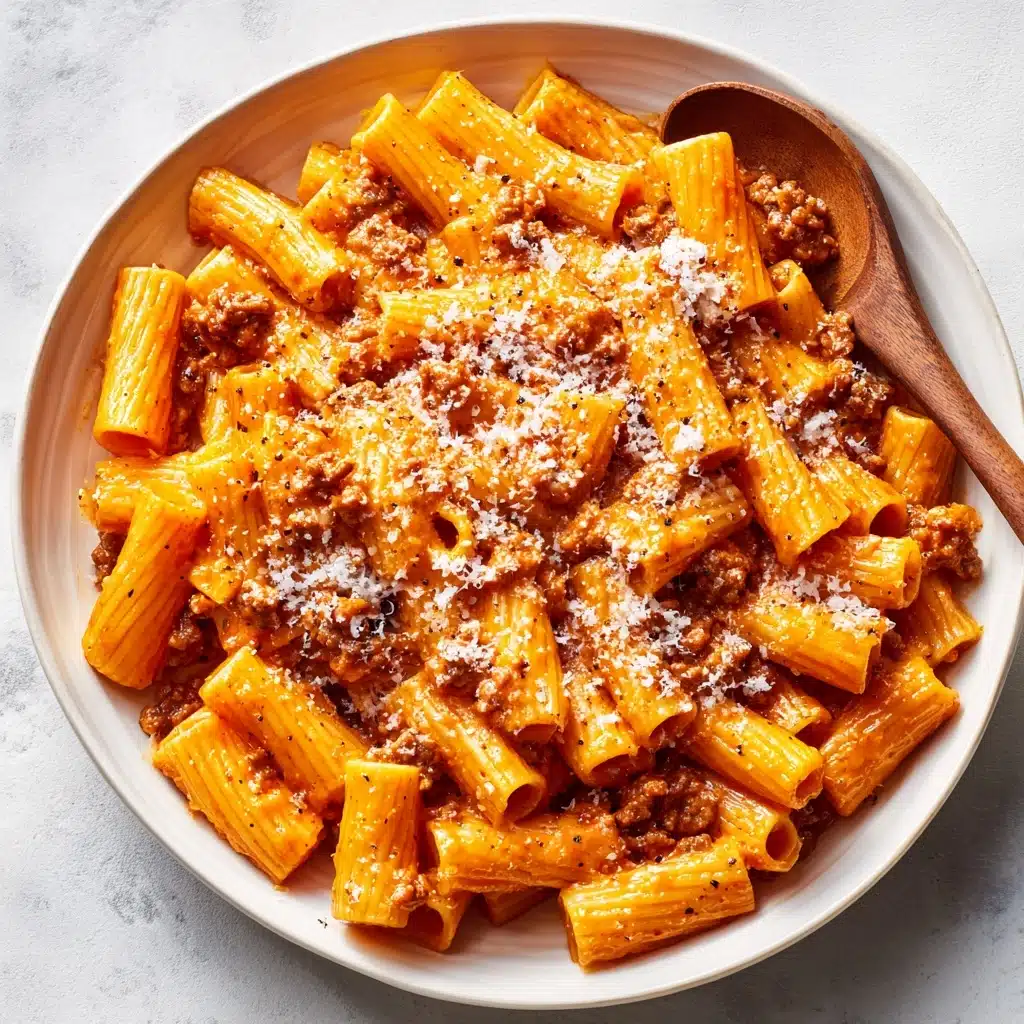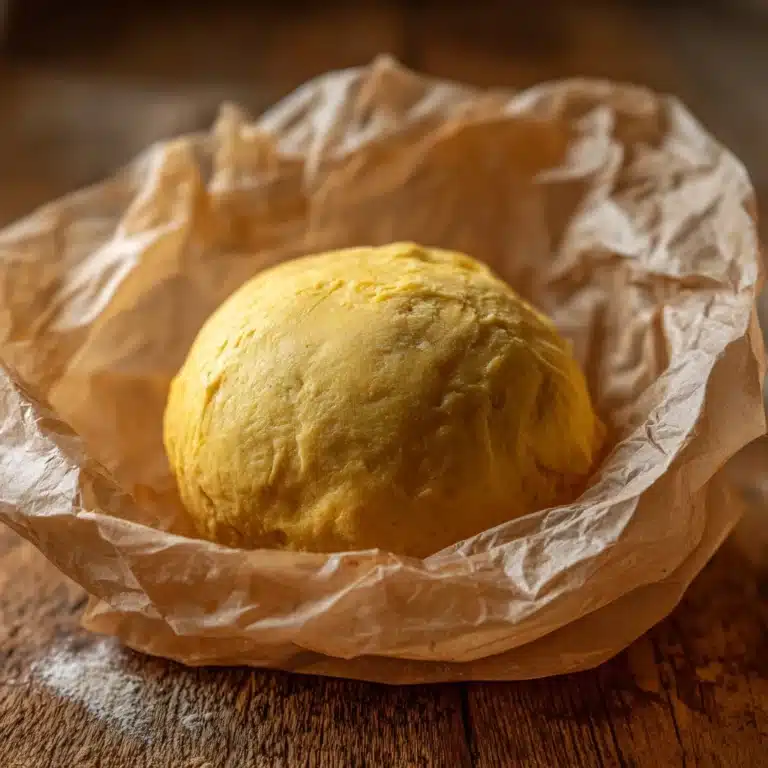If you’re looking for a dish that truly captures the heart and soul of Roman cooking, look no further than Pasta all’Amatriciana. This beloved recipe is the ultimate comfort food, bringing together savory guanciale, punchy Pecorino Romano, and a robust tomato sauce that clings to every strand of pasta. Not only is it quick enough for a weeknight, but its bold, balanced flavors feel just right for a special meal among friends or family. Let’s dive into what makes Pasta all’Amatriciana a classic you’ll turn to again and again!
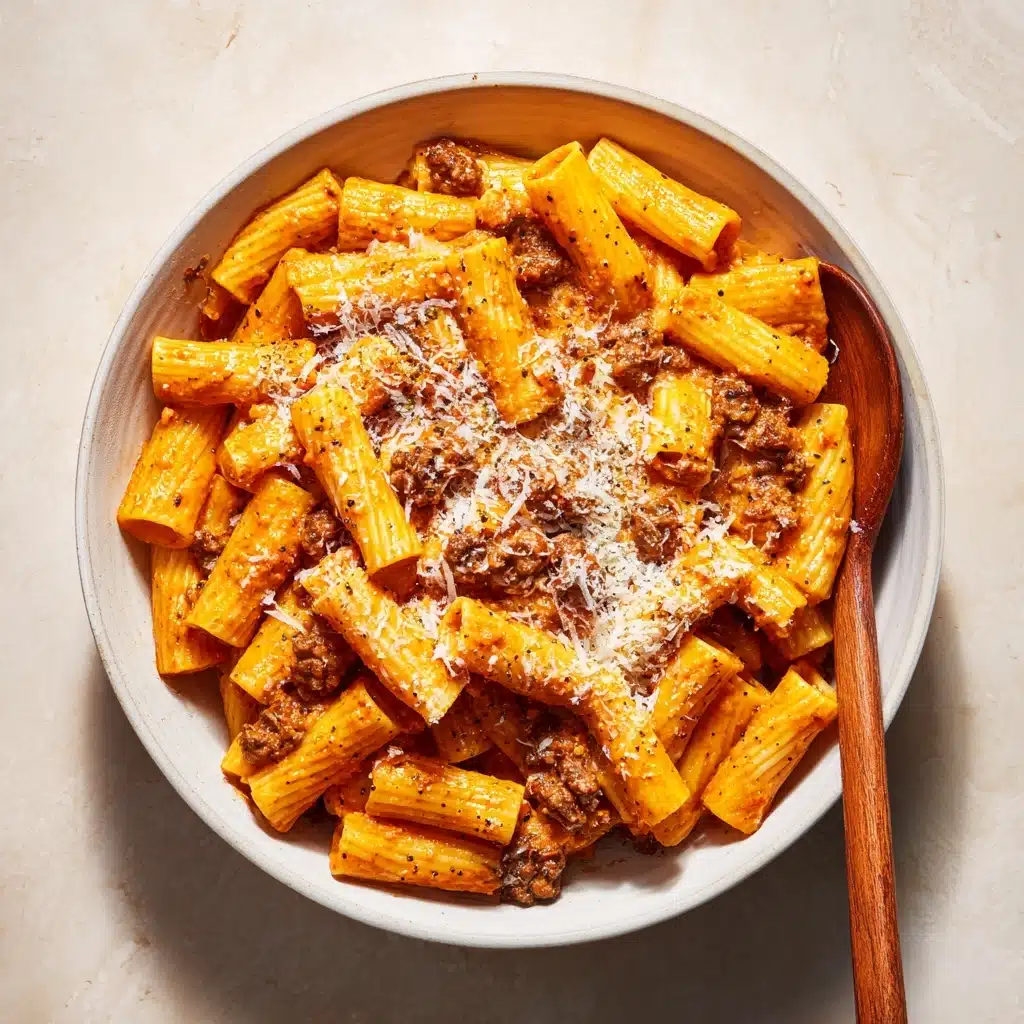
Ingredients You’ll Need
The magic of Pasta all’Amatriciana lies in its few but mighty ingredients. Each one brings something special: depth from the pork, heat from the pepper flakes, and bright acidity from tomatoes. Gather these essentials and you’re well on your way to pasta perfection.
- Spaghetti or Bucatini (12 ounces): Bucatini is the Roman favorite, but spaghetti works beautifully if that’s what you have on hand.
- Guanciale, diced (4 ounces): This cured pork cheek delivers signature depth and richness; use pancetta if you can’t find guanciale.
- Olive Oil (1 tablespoon): Helps render the pork and adds an extra layer of flavor for a silkier sauce.
- Crushed Red Pepper Flakes (1/2 teaspoon): Adjust to taste—this is where you control the subtle heat that makes Amatriciana sing.
- Diced Tomatoes, with juices (1 14-ounce can): Quality canned tomatoes make this a year-round staple; they soak up all the goodness in the pan.
- Pecorino Romano, grated (1/2 cup): This salty, tangy cheese binds everything together and should be freshly grated for maximum flavor.
- Salt and Freshly Ground Black Pepper, to taste: Bring out all those big, bold flavors with just the right seasoning.
How to Make Pasta all’Amatriciana
Step 1: Cook the Pasta
Begin by bringing a large pot of salted water to a boil. Add your bucatini or spaghetti and cook till it’s just al dente—firm to the bite, but not hard. Remember to reserve about half a cup of the pasta water before draining; this pasta water is liquid gold for giving your Pasta all’Amatriciana its perfect saucy consistency.
Step 2: Render the Guanciale
In a large skillet, heat your olive oil over medium. Add the diced guanciale and let it cook until it becomes irresistibly crispy and golden, which takes about 5 to 7 minutes. The guanciale will render its fat, infusing the oil with a deep, savory flavor that is absolutely essential for authentic Pasta all’Amatriciana.
Step 3: Add Spice and Aromatics
Sprinkle the crushed red pepper flakes into the hot pan with your sizzling guanciale. Let them cook for about 30 seconds—just long enough to bloom their warmth without burning. This step is what gives Pasta all’Amatriciana its gentle, characteristic heat.
Step 4: Simmer with Tomatoes
Pour the diced tomatoes (with their juices) into the skillet. Stir everything together and let the sauce simmer for 8 to 10 minutes, until it thickens and the flavors fuse. Be patient: this short simmer is where the guanciale, tomato, and pepper flakes create the uniquely vibrant backbone of Pasta all’Amatriciana.
Step 5: Combine and Finish
Add your drained pasta directly to the skillet. Toss gently but thoroughly, letting each strand soak up the luscious sauce. If things look a bit dry, splash in some reserved pasta water until the sauce is glossy and coats the noodles. Off the heat, stir in half of your grated Pecorino Romano, which will melt into creamy ribbons. Serve with extra cheese and a generous twist of black pepper on top. Voilà, your Pasta all’Amatriciana is ready to dazzle.
How to Serve Pasta all’Amatriciana
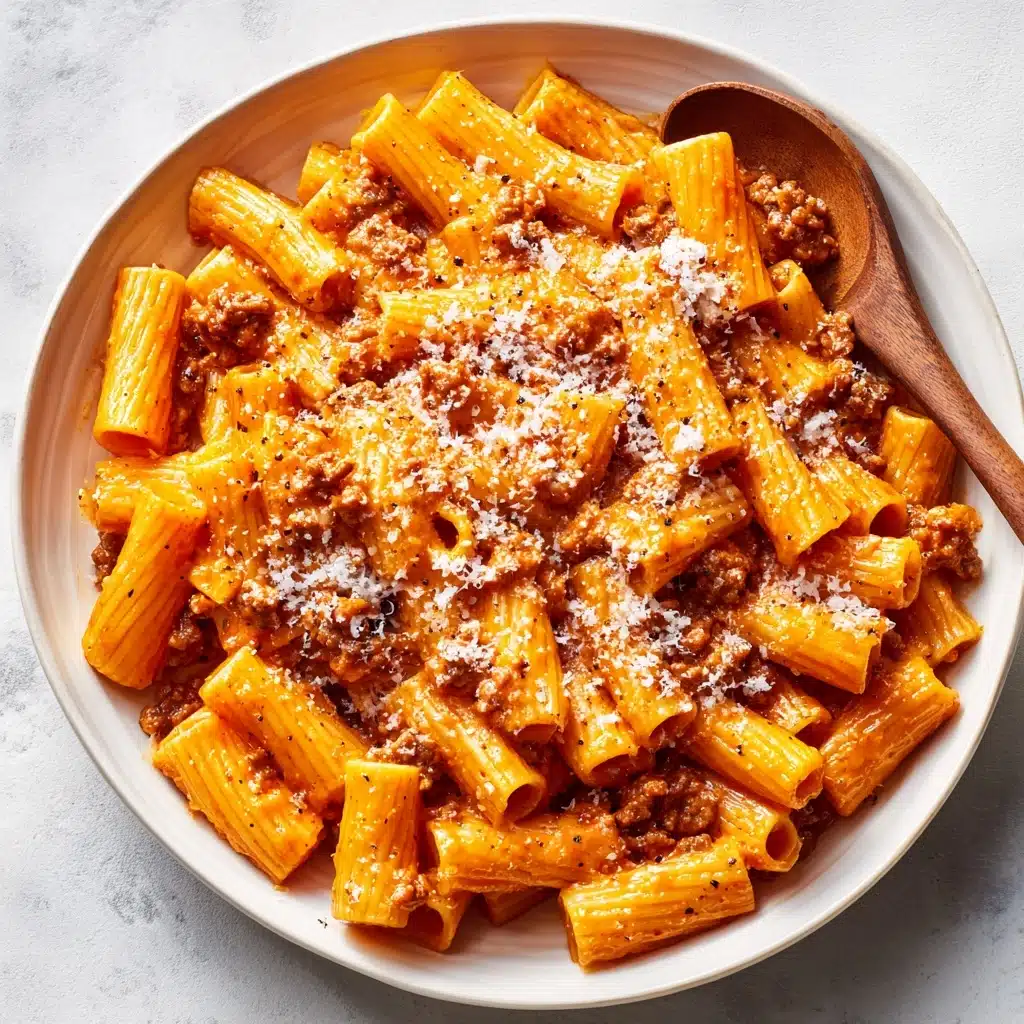
Garnishes
For that quintessential finish, nothing beats another shower of freshly grated Pecorino Romano and a fresh hit of cracked black pepper. If you love a bit of color, a sprinkle of finely chopped flat-leaf parsley is a bright, tasty touch.
Side Dishes
Keep it classic and simple: a crisp green salad with a light vinaigrette cuts through the richness of Pasta all’Amatriciana beautifully. Some crusty bread on the side is also perfect for soaking up every last drop of that divine sauce.
Creative Ways to Present
If you’re aiming to impress, try serving Pasta all’Amatriciana in warmed shallow bowls with a dramatic twist of bucatini piled high. For gatherings, offer a “pasta bar” with individual bowls of extra cheese, chili flakes, and chopped herbs so guests can finish their plates just how they like them.
Make Ahead and Storage
Storing Leftovers
If you find yourself with a little extra Pasta all’Amatriciana (lucky you!), let it cool to room temperature. Store it in an airtight container in the refrigerator, and it will stay flavorful for up to three days.
Freezing
While you can freeze Pasta all’Amatriciana, the sauce holds up better than the pasta itself. If you’d like to freeze, store the sauce on its own in a sealed container for up to two months; cook fresh pasta for the best texture when you’re ready to enjoy it.
Reheating
Reheat Pasta all’Amatriciana gently in a skillet over low heat, adding a splash of water to help revive the sauce. Stir in a bit more grated Pecorino Romano before serving to bring back its creamy richness.
FAQs
Can I use pancetta instead of guanciale?
Absolutely! While guanciale gives the most authentic flavor, pancetta is a fantastic substitute and still brings savory, rich notes to your Pasta all’Amatriciana.
What’s the best pasta shape for Pasta all’Amatriciana?
Bucatini is the classic choice thanks to its hollow center that captures more sauce, but spaghetti works well if that’s what you have. Other robust shapes like rigatoni also taste great.
Is Pasta all’Amatriciana very spicy?
It has a mild but noticeable heat from the crushed red pepper flakes, but it’s easy to adjust the spice level to your taste. Just use less—or more—pepper flakes based on your preference.
Can I make this dish vegetarian?
Pasta all’Amatriciana’s signature flavor relies on the pork, but for a vegetarian spin, omit the guanciale and add a bit of smoked olive oil or mushrooms sautéed with smoked paprika for savory depth.
What’s the difference between Pecorino Romano and Parmesan?
Pecorino Romano is saltier, tangier, and made from sheep’s milk, while Parmesan (Parmigiano-Reggiano) is milder and made from cow’s milk. For Pasta all’Amatriciana, Pecorino Romano is the classic, but Parmesan is an acceptable alternative in a pinch.
Final Thoughts
There’s just something magical about the way Pasta all’Amatriciana brings people together—its simplicity and bold flavors make it a dish worth sharing. I hope you’ll give it a try soon and see why it’s an all-time favorite in so many Italian kitchens (and now, hopefully, yours too)!
Print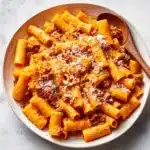
Pasta all’Amatriciana Recipe
- Total Time: 25 minutes
- Yield: 4 servings
- Diet: Vegetarian
Description
Indulge in the rich flavors of traditional Italian cuisine with this Pasta all’Amatriciana recipe. A classic dish featuring pasta, guanciale, and a tangy tomato sauce, finished with Pecorino Romano cheese for a satisfying meal.
Ingredients
Spaghetti or Bucatini:
12 ounces
Guanciale:
4 ounces diced
Olive Oil:
1 tablespoon
Crushed Red Pepper Flakes:
1/2 teaspoon
Diced Tomatoes:
1 (14-ounce) can
Pecorino Romano Cheese:
1/2 cup grated
Salt and Pepper:
to taste
Instructions
- Cook Pasta: Boil salted water and cook pasta until al dente.
- Cook Guanciale: Saute guanciale in olive oil until crispy.
- Add Flavors: Stir in red pepper flakes, tomatoes, simmer.
- Combine: Toss cooked pasta in sauce, add cheese.
- Serve: Top with remaining cheese and pepper.
Notes
- Use authentic guanciale for traditional flavor.
- Adjust red pepper flakes for desired spiciness.
- Bucatini is classic, but spaghetti works too.
- Prep Time: 5 minutes
- Cook Time: 20 minutes
- Category: Main Course
- Method: Stovetop
- Cuisine: Italian
Nutrition
- Serving Size: 1 bowl
- Calories: 540
- Sugar: 6g
- Sodium: 620mg
- Fat: 18g
- Saturated Fat: 6g
- Unsaturated Fat: 10g
- Trans Fat: 0g
- Carbohydrates: 68g
- Fiber: 4g
- Protein: 22g
- Cholesterol: 35mg
